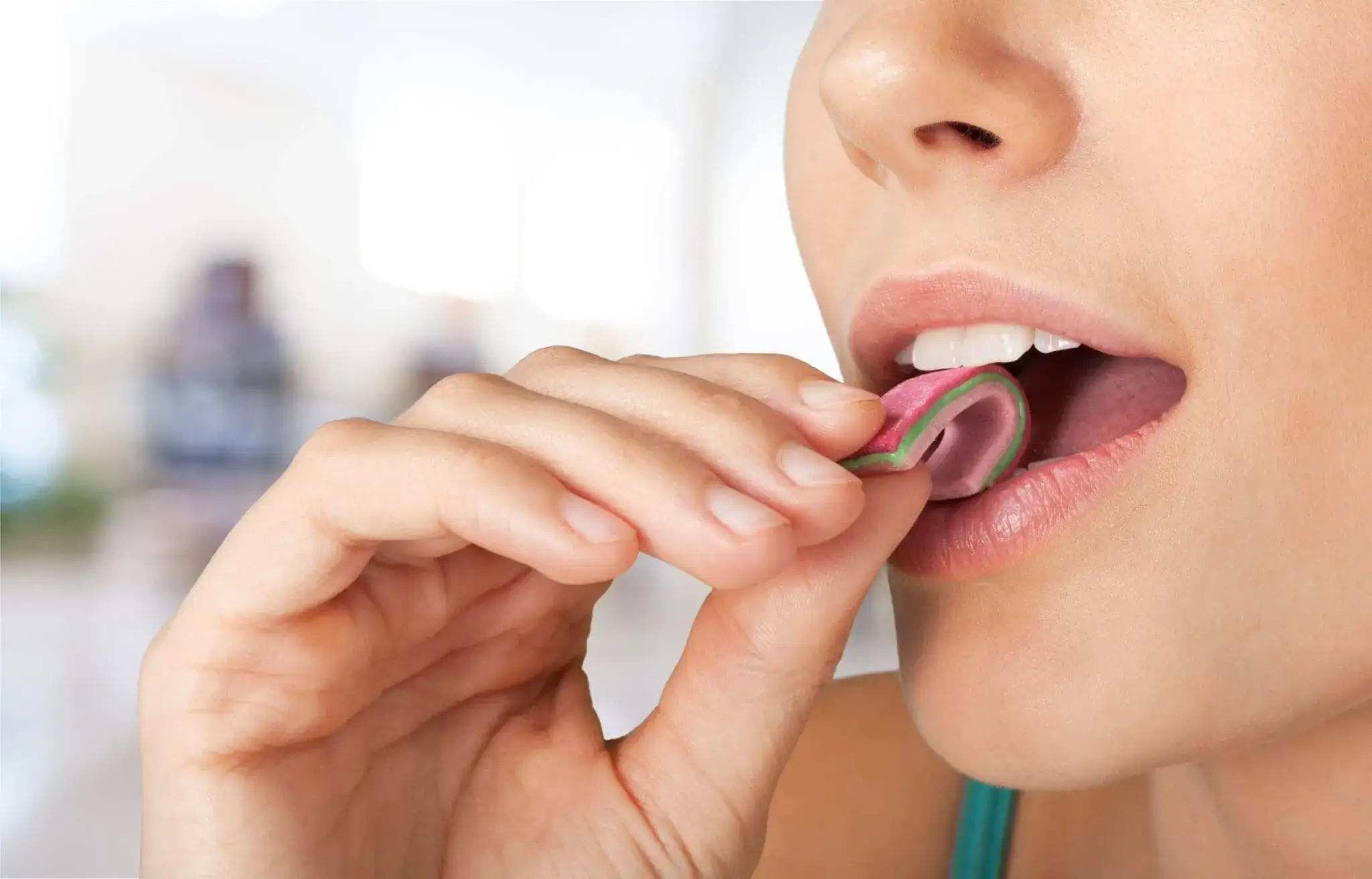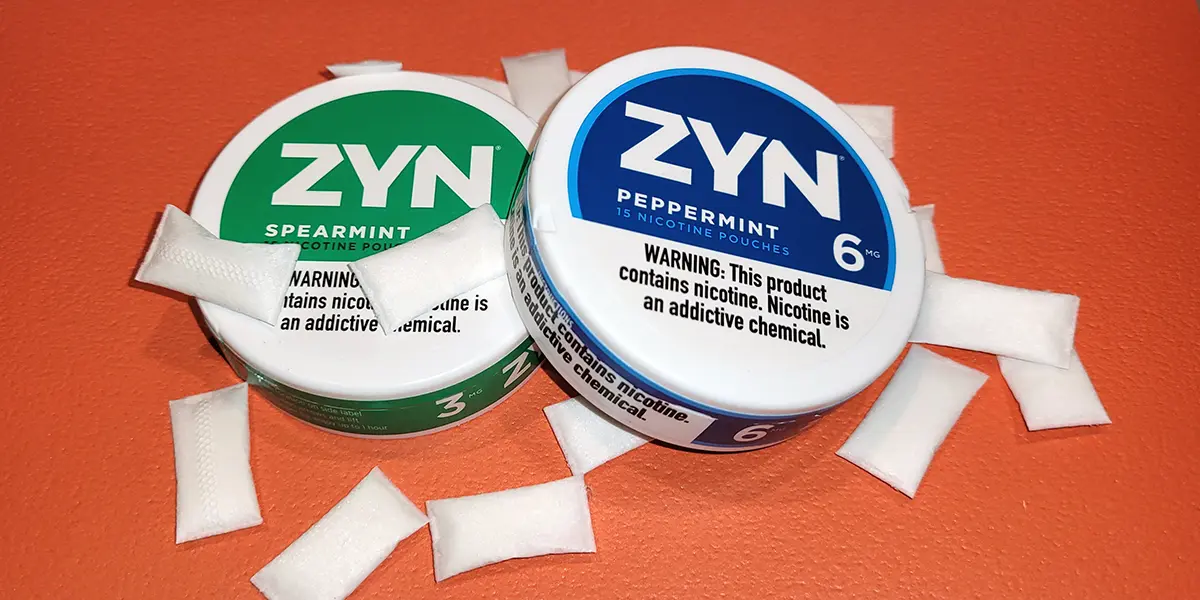It’s funny how something as small and ordinary as a stick of gum can spark such a big debate. You pop it in your mouth, maybe to freshen your breath before a meeting, or just because you like the rhythm of it — and yet, there’s this lingering question: are you actually helping your jaw muscles, or setting yourself up for jaw pain later?
Chewing gum’s been around for centuries, in one form or another. The ancient Greeks chewed tree resin. The Mayans used chicle. Fast-forward to today, and we’ve got entire shelves dedicated to sugar-free gum, nicotine gum, and even Facial Fitness Gum claiming to sculpt your jawline. Some people swear it’s a mini workout for your face, part of the whole “is chewing gum good for your jaw definition” trend that’s all over social media.
But then, there’s the other side — people who can’t chew gum without triggering TMJ issues, orofacial pain, or even tension headaches. Some dentists warn that constant chewing could strain the temporomandibular joints (those delicate hinges connecting your jaw to your skull). Others argue that chewing keeps your facial muscles strong and your saliva flow healthy.
So which is it? Helpful, or harmful? In this guide, we’ll walk through 8 surprising facts that explore both sides — how chewing gum might shape your facial structure, support oral health, and maybe (just maybe) overwork those masseter muscles if you go too far.
Is Chewing Gum Good for Your Jaw? Understanding the Truth Behind the Hype
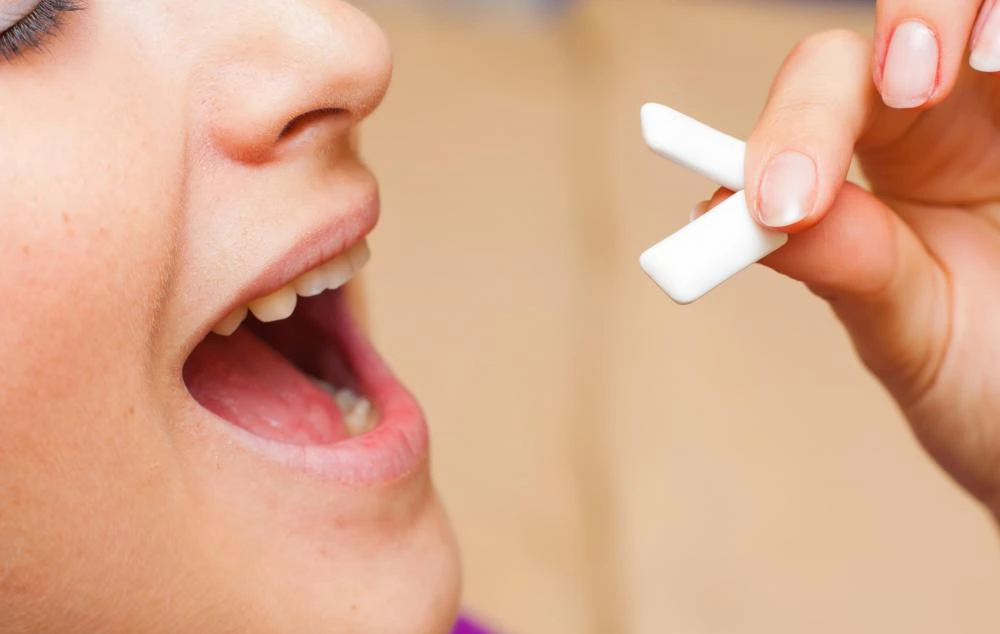
Now that we’ve peeled back all ten facts, let’s get real about the big question: Is chewing gum good for your jaw overall?
The answer depends entirely on how, what, and why you chew.
For most people, moderate gum chewing can:
- Strengthen jaw muscles slightly
- Improve blood flow and saliva production
- Ease stress and jaw tightness when done mindfully
- Help maintain oral hygiene by reducing plaque acids
But when taken too far, it can:
- Strain your TMJ joint
- Cause muscle imbalances or mild asymmetry
- Lead to jaw pain, headaches, or clicking
- Exacerbate existing bite issues or malalignment
In short, chewing gum is like coffee. Great in moderation, harmful in excess.
Here’s a quick takeaway table for clarity:
| Scenario | Outcome | Verdict |
| Chewing soft gum 1–2 hrs/day | Healthy jaw activity | 👍 Good |
| Chewing hard gum for long sessions | Muscle overuse, tension | ⚠️ Risky |
| Chewing for stress relief | Helpful, relaxing | 😊 Positive |
| Chewing to build jawline muscle | Limited benefit | 🤔 Overrated |
Is Chewing gum is good for your jaw, so yes, when used wisely, not obsessively. It’s about rhythm, not resistance. A few mindful minutes a day can keep your jaw flexible, your facial muscles balanced, and your posture aligned.
Pro Tip: Pair gum chewing with mindful breathing — inhale slowly, chew evenly, and exhale through your nose. This reduces tension while keeping your jaw muscles active and calm.
I. Fact #1: Chewing Gum Strengthens Jaw Muscles — But Only Up to a Point
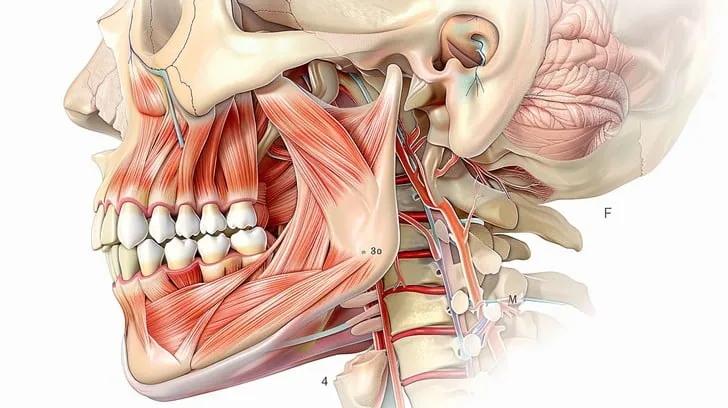
When people ask, “does chewing gum strengthen your jaw muscles?”, the short answer is — yes, kind of. The masseter (that thick muscle at the back of your cheek) is one of the strongest in your body, and the repetitive chewing process does engage it. Every time you chew, those masticatory muscles flex, which can subtly improve muscle tone over time.
But here’s the catch — your jaw isn’t meant for nonstop reps. There’s such a thing as overtraining, even for your face. Dentists at clinics like Oak Ridge Dental and Peak Dentistry often see patients who chew gum all day and end up with jaw joint pain, facial tightness, or muscle fatigue. It’s like doing curls every hour without rest.
To strike a balance, think of gum chewing as light resistance training. A few minutes here and there — say, 10 to 15 minutes after meals — can stimulate your saliva production, help digestion, and even strengthen your bite force a little. But beyond that, you risk TMJ disorder or uneven muscle growth if you favor one side while chewing.
Here’s a quick reference guide for balance:
| Chewing Time | Benefit | Risk |
| 5–10 minutes after meals | Improves saliva flow and oral hygiene | Low risk |
| 15–30 minutes per day | Mild muscle toning, stress relief | Possible fatigue |
| 1+ hour per day | Overuse of temporomandibular joints | High risk of pain or imbalance |
Pro Tip: Alternate sides every few minutes while chewing to keep your facial structure symmetrical — it helps prevent one side from bulking up or tightening unevenly.
II. Fact #2: Chewing Gum Can Improve Jawline Definition (Slightly)
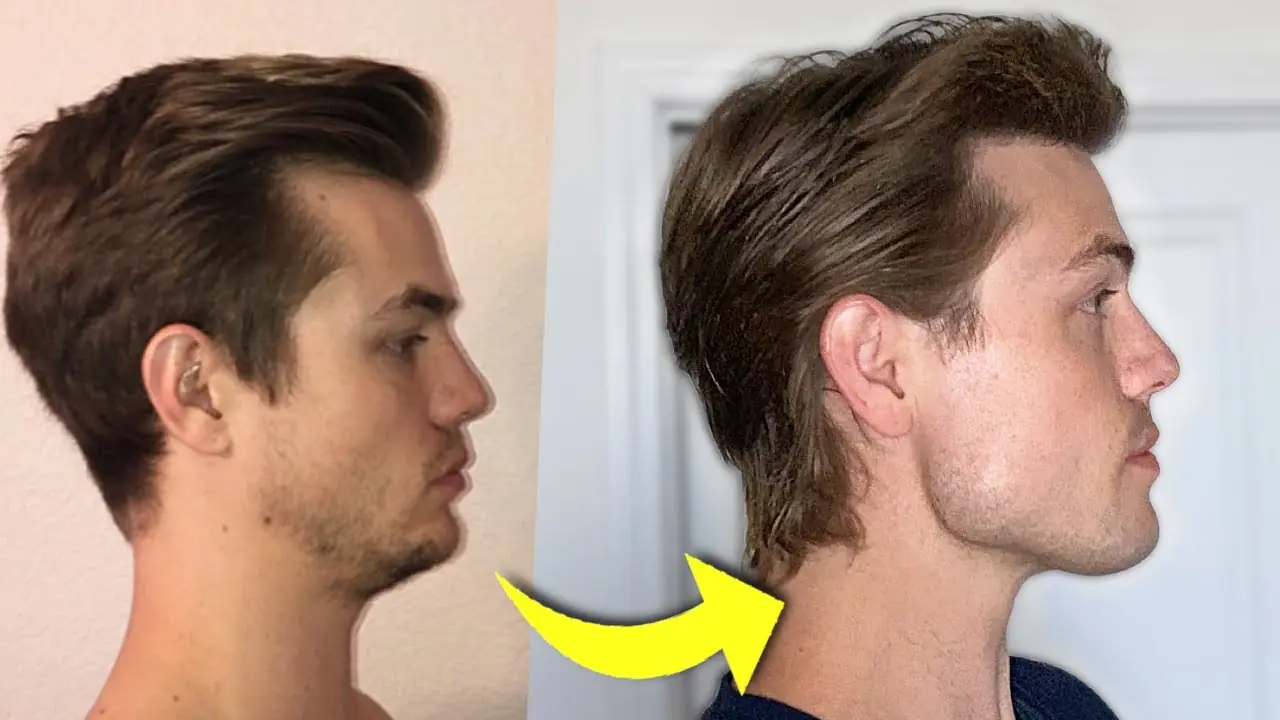
Now, this is where things get interesting — and a bit misunderstood. A lot of people start chewing gum hoping it’ll carve out that sharp, model-like jawline. You’ve probably seen those side-by-side selfies floating around social media, claiming dramatic changes from months of chewing gum for jawline definition. But, truthfully? It’s not that simple.
When you chew, your facial muscles, particularly the masseter muscles, do get a bit of a tone-up. It’s like a mini resistance workout — you’re engaging the masticatory muscles that give structure to your lower face. That repetitive motion can tighten things up a little, making your facial profile seem more defined.
But here’s the real talk: definition has more to do with body fat percentage than anything else. You can have incredibly strong jaw muscles, but if there’s a layer of soft tissue over them — whether it’s due to genetics, diet, or even posture — you won’t necessarily see a difference.
Some enthusiasts even turn to Facial Fitness Gum or brands like Jawz Gum and Stronger Gum, claiming they “train” your jaw. They do add resistance, yes, but they can also increase the risk of jaw strain or temporomandibular joint disorder if you overdo it.
Here’s a small comparison that might help:
| Type of Gum | Primary Benefit | Caution |
| Regular Sugar-Free Gum | Freshens breath, improves salivary flow | Safe for daily use |
| Mastic Gum | Mild jaw resistance, helps oral health | Moderate toughness |
| Facial Fitness / Hard Gum | Intense resistance for jaw muscle strength | Risk of TMJ pain, facial fatigue |
Pro Tip: If you’re chewing gum for aesthetics, go slow. Alternate sides, avoid constant chewing, and pair it with light facial exercises like chin lifts or neck curls for better balance.
So yes — chewing gum might slightly enhance your jawline, but it won’t chisel bone. Think of it more like refining the surface, not reshaping the foundation.
III. Fact #3: Overchewing May Lead to TMJ Disorder
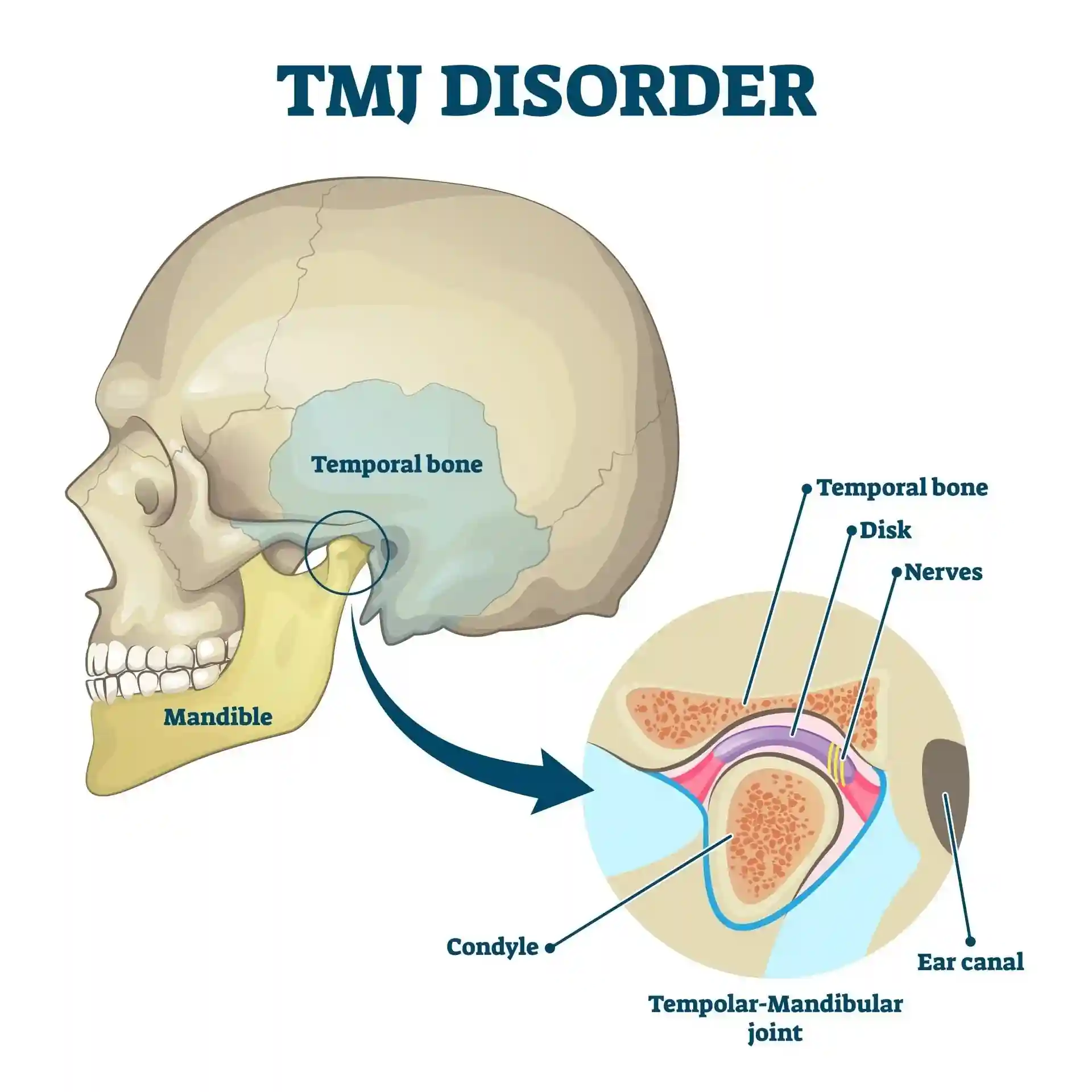
Here’s the downside — and it’s a big one, people don’t always talk about. Too much of a good thing can actually throw your temporomandibular joints out of alignment. These are the small, delicate joints right in front of your ears that control every movement when you open, close, or shift your jaw.
When you chew excessively, especially tough or hard gum, those joints are under continuous mechanical stress. Over time, it can lead to Temporomandibular Joint Disorder (TMJ disorder) — a condition marked by clicking, popping, or pain when you talk or eat. Some people even experience headaches, neck tension, or jaw locking because the masticatory muscles tighten and stop relaxing properly.
Dentists like Dr. Rashpal Deol and Dr. Mike Mew (yes, the same one often mentioned in discussions about tongue posture and facial structure) emphasize jaw rest as much as jaw activity. The functional matrix hypothesis suggests that your jaw’s health is tied to overall facial balance, meaning too much repetitive chewing can disrupt the system.
Signs you might be overchewing:
- Persistent jaw joint pain or soreness after chewing
- Clicking or popping sounds near your ears
- Morning stiffness in your jaw muscles
- One-sided swelling or uneven facial tightness
- Pain radiating to your temple or neck (sometimes mistaken for tension headaches)
If that sounds familiar, it’s not about quitting gum entirely — it’s about giving your temporomandibular joints a break. Simple adjustments, like limiting chewing sessions to 15 minutes or using softer, ADA Approved Sugar-Free Gum, can help a lot.
Pro Tip: Apply a warm compress to your jaw before bed if you’ve chewed gum during the day — it helps relax the muscles and ease tension.
IV. Fact #4: Sugar-Free Gum Can Protect Teeth and Freshen Breath

Here’s where the story shifts from looks to health — oral health, to be exact. While most people chew gum for fresher breath, not everyone realizes that the type of gum you choose makes all the difference for your jaw, your teeth, and even your saliva production.
If you’re wondering whether sugar-free gum is actually better, the answer’s a solid yes — but with a few conditions. Gum sweetened with xylitol, sorbitol, or artificial sweeteners tends to reduce tooth decay, stimulate saliva flow, and wash away food acids that cause dental caries. It’s even backed by the American Dental Association Seal of Acceptance (look for that small ADA logo on the pack).
Meanwhile, gum with sugar does the opposite — feeding the bacteria that cause tartar buildup and bad breath. Over time, that can mess with your pulpal tissues and make your teeth more prone to cavities. And ironically, the extra chewing needed to clear sugar’s sticky residue can lead to muscle fatigue or jaw soreness if you’re not careful.
Here’s a simple side-by-side comparison:
| Type | Pros | Cons | Best For |
| Sugar Gum | Quick energy, flavor variety | Promotes tooth decay, tartar buildup | Rare treat only |
| Sugar-Free Gum (Xylitol) | Fights cavities, increases salivary flow | Mild stomach upset (if overused) | Everyday chewing |
| Whitening Gum (with baking soda or enzymes) | Reduces surface stains, freshens breath | Can dry out mouth slightly | Post-meal chewing |
Now, if you’re thinking about long-term dental healthy habits stick to ADA-approved sugar-free gum. Brands like Trident, Orbit, and even newer lines like Peak Dentistry’s SmartChew or WoodSprings Dentistry’s FreshMint line are good examples.
Pro Tip: Chew sugar-free gum for 10 minutes after meals — it helps neutralize acids, stimulate saliva flow, and freshen breath without putting stress on your temporomandibular joints.
V. Fact #5: Chewing Gum Boosts Focus and Reduces Stress

Maybe you’ve noticed this — when you’re nervous, stressed, or deep in thought, you chew gum almost instinctively. There’s actually a reason for that. Studies from the University of Southern California and several Master of Science programs in psychology have found that the chewing process stimulates parts of the brain linked to alertness and cognitive performance.
In other words, it’s not just about your jaw muscles; it’s about your mental state. The rhythmic motion of gum chewing boosts blood flow to the brain, subtly increasing oxygen supply. That can translate to better focus, quicker reaction times, and a mild drop in cortisol, your main stress hormone.
And yet — because nothing is ever one-sided — there’s a small catch. Constant stress chewing (especially with hard gum) can lead to physical stress in your temporomandibular joints, which in turn might cause facial tightness or TMJ issues over time. So yes, it calms your nerves, but it can strain your masticatory muscles if you’re using gum as a coping mechanism all day long.
If you tend to chew when anxious or bored, you’re not alone.
Here’s a small list of ways to keep it mindful:
- Choose sugarless gum with mild resistance (avoid “jaw trainer” types).
- Limit chewing to 15–20 minutes per session.
- Stretch your jaw — small side-to-side motions help relieve tension.
- Try substituting with a stress ball or a breathing exercise when you’re fidgety.
Pro Tip: Next time you’re feeling overwhelmed, chew slowly — don’t rush it. Notice the rhythm. It’s not just a habit; it’s a kind of grounding. Just don’t let it become your only way to manage tension.
So yes — chewing gum can lift your mood and help you stay sharp, but moderation’s the secret. Your jaw, facial muscles, and even your TMJ will thank you for it.
VI. Fact #6: Hard or Tough Gum Increases Jaw Strain
Here’s where things get tricky — literally. Not all gum is created equal, and the texture or density of what you’re chewing can make a surprising difference to your jaw joints and facial muscles. Some brands of Facial Fitness Gum or resistance gum promise to “train” your masseter muscles for a sharper look. But the question you really need to ask is: is chewing gum good for your jaw when it’s that tough?
The short answer: only if you know your limits. Harder gums, like mastic gum, do engage your masticatory muscles more intensely, boosting bite force and stimulating bone remodeling (yes, the same principle behind Wolff’s Law, where bones adapt to stress). But that extra resistance also loads your temporomandibular joints — and those joints don’t love being overworked.
When your masseter muscles grow too strong or tight, it can actually distort your facial symmetry. You might even notice one side becoming bulkier if you chew unevenly. Over time, this imbalance may lead to TMJ disorder, facial tightness, or what dentists at Oak Ridge Dental describe as “functional overuse injury.”
Here’s a breakdown for quick comparison:
| Gum Type | Texture | Jaw Benefit | Potential Risk |
| Regular Sugar-Free Gum | Soft | Mild jaw workout | Minimal strain |
| Mastic Gum | Hard | Strengthens masseter muscles | Possible TMJ issues |
| Facial Fitness / Jawline Gum | Very Hard | Increases bite force | High risk of jaw joint pain |
If you’ve ever noticed soreness after a long chew, that’s your temporomandibular joints asking for rest.
Pro Tip: To prevent muscle fatigue, start with regular gum and gradually increase resistance. Think of it like weightlifting — your jaw also needs recovery days.
Sometimes, people even combine Botox injections or dermal fillers with heavy gum routines to alter facial structure. Dentists warn against this — it can weaken or relax the wrong muscles, throwing your occlusion (bite alignment) off balance.
So yeah, chewing gum can help strengthen your jaw muscles, but using high-resistance types too often might backfire, especially if your temporomandibular joints are sensitive.
VII. Fact #7: Chewing Gum Improves Digestion and Jaw Mobility

Now, here’s a benefit you might not expect — chewing gum can actually help your stomach and jaw mobility at the same time. It’s one of those subtle links between your mouth, brain, and digestive system that people don’t talk about enough.
When you chew (especially sugar-free gum), your body thinks you’re eating. That triggers salivary glands to ramp up saliva production, which carries enzymes like amylase and lipase that begin digestion even before food arrives. That’s partly why doctors sometimes recommend gum chewing after surgery to reactivate the digestive process.
So yes — is chewing gum good for your jaw? Absolutely, but it’s also quietly helping your gut health by keeping those digestive reflexes alive.
But beyond the stomach connection, there’s the mobility factor. Gentle jaw movement keeps your temporomandibular joints lubricated and flexible, which reduces stiffness — especially in people who clench their teeth or grind at night. It’s like giving your jaw a mini yoga stretch every time you chew.
Here’s how chewing impacts more than just your mouth:
| Benefit | How It Works | Related Keywords |
| Boosts Digestion | Stimulates enzyme secretion via saliva flow | salivary flow, gut health, oral health |
| Increases Jaw Flexibility | Keeps jaw joints active | temporomandibular joints, facial mobility |
| Prevents Dry Mouth | Increases saliva production | dry mouth, salivary glands, oral hygiene |
Pro Tip: Try chewing a mild sugarless gum for 10 minutes after lunch — it boosts salivary flow, supports digestion, and keeps your facial muscles relaxed without straining your masticatory system.
So in a strange but satisfying way, gum chewing isn’t just about fresh breath or jawline benefits. It’s part of a bigger biological loop — movement, saliva, digestion, and muscle balance all working quietly together in the background.
VIII. Fact #8: The “Gum for Jawline” Trend — Truth or Hype?
You’ve probably seen it all over TikTok and YouTube — creators swearing that chewing gum can sculpt your jawline or “activate” hidden muscles in your face. Some even promote “hard chewing gum” or jaw exercise gum as the secret to a chiseled look.
But… is chewing gum good for your jaw when it’s used like a workout tool? Let’s unpack that.
First, yes — chewing involves the masseter muscles, which can hypertrophy (grow slightly) with repeated use. That’s why people who chew tougher gum like Falim, Greco gum, or mastic gum may notice more definition near their jaw. However, the change is usually mild and often depends on your body fat percentage and facial structure more than anything else.
Experts say excessive chewing for “aesthetics” can backfire, leading to:
- TMJ inflammation (especially with hard gum or long sessions)
- Headaches from overworked temporalis muscles
- Uneven jawline if you chew more on one side
- And yes, eventual jaw joint clicking or popping
Here’s how it breaks down in simple terms:
| Type of Gum | Intensity | Potential Benefit | Potential Risk |
| Regular sugar-free gum | Low | Mild toning, saliva stimulation | Minimal risk |
| Mastic or Falim gum | Moderate to high | Slightly firmer jawline | Jaw fatigue |
| “Jaw exercise” gum (very hard) | Extreme | Visible masseter growth | TMJ strain, muscle pain |
So, chewing gum for a sharper jawline might give you a small boost, but not a miracle. Think of it more like a micro-workout — it works, but it’s not meant to replace full-body conditioning or balanced muscle alignment.
Pro Tip: If you’re chewing gum for aesthetics, keep sessions under 10 minutes per side and avoid using it as your main form of “facial exercise.” Balance it with stretching and relaxation.
X. Expert Insights: What Dentists and Specialists Say
Let’s cut through the social media noise for a second. Dentists and maxillofacial experts have a pretty balanced view when it comes to the question: is chewing gum good for your jaw? Their consensus: it can be beneficial, but only when used mindfully and within limits.
Dr. Sarah Jensen, a TMJ specialist from the American Academy of Orofacial Pain, explains it like this:
“Chewing gum is a form of light exercise for the jaw — similar to how walking benefits the legs. But when you start sprinting non-stop, that’s when problems begin. The jaw joint isn’t built for hours of repetitive strain.”
In other words, gum isn’t the enemy — overuse is.
Most experts agree that:
- 10–20 minutes of gum chewing per side, a few times a day, is healthy.
- You should alternate sides to avoid asymmetry.
- Choose soft or medium-hard gum — not overly tough or “resistance” types.
- If you experience clicking, popping, or uneven bite pressure, stop immediately.
Another voice, Dr. Daniel Moretti (DDS), notes that jawline enhancement from chewing gum is mostly temporary:
“People mistake muscle pump for muscle gain. Chewing gum can make the masseter slightly firmer, but true facial sculpting depends more on posture, fat distribution, and overall fitness.”
So the answer to is chewing gum good for your jaw from a professional standpoint?
✅ Yes, in moderation — especially for oral circulation and tension relief.
❌ No, if you’re using it excessively or as a cosmetic workout.
Here’s how dental professionals typically rank chewing gum practices:
| Chewing Habit | Dentist’s Verdict | Reason |
| Chewing sugar-free gum after meals | 👍 Healthy | Stimulates saliva, neutralizes acids |
| Chewing one-sided for long periods | ⚠️ Risky | Causes imbalance and TMJ stress |
| Chewing tough “jawline” gum daily | ❌ Harmful | Overloads masseter and joint |
| Chewing in moderation, both sides | ✅ Safe | Promotes muscle tone and joint mobility |
Pro Tip: The best time to chew gum is 10–15 minutes after a meal — when saliva flow aids digestion and refreshes your mouth naturally.
XI. Best Practices: How to Chew Gum Safely for Jaw Health
Alright, you’ve got the facts and expert opinions — now let’s make it practical. If you’re still wondering is chewing gum good for your jaw, here’s how to make it work for you, not against you.
🕒 1. Follow the “10-Minute Rule”
Never chew gum endlessly. Cap your session around 10 minutes per side, max 30 minutes total. This prevents muscle fatigue and joint irritation.
⚖️ 2. Balance Both Sides
Switch sides every few minutes. It may feel awkward at first, but this small habit prevents jaw asymmetry, TMJ stiffness, and uneven bite pressure.
💧 3. Choose Sugar-Free, Soft Textures
Opt for gums sweetened with xylitol or sorbitol — they’re tooth-friendly and gentle on the muscles. Avoid “training gums” unless recommended by a dentist.
🧘♀️ 4. Combine with Relaxation
Pair gum chewing with deep breathing or mindful posture. It keeps facial tension low and enhances the jaw’s natural rhythm.
🪞 5. Check for Warning Signs
Stop immediately if you notice:
- Clicking or grinding noises
- Headaches near temples
- Uneven bite or soreness
- Pain radiating toward the ears or neck
🌿 6. Explore Natural Alternatives
If you’re doing it for jawline strength, try mewing, chin lifts, or tongue posture training instead. These build better long-term results without risking TMJ inflammation.
| Alternative Exercise | Benefit | Frequency |
| Mewing (tongue posture) | Supports jaw alignment | Daily |
| Chin tucks | Improves posture & jaw position | 2–3x/day |
| Jaw stretches | Reduces stiffness | As needed |
| Soft gum chewing | Light muscle activation | 1–2 sessions/day |
Pro Tip: Combine gum chewing with a few light neck stretches afterward — it resets your jaw alignment and reduces tension buildup.
XII. Chewing Gum and Facial Aesthetics: What Science Actually Says
Let’s be honest — most people asking is chewing gum good for your jaw aren’t thinking about saliva flow or oral hygiene. They’re wondering if it’ll make their face look sharper. I get it. We’ve all seen those videos of influencers biting on some “Jawline Trainer” or “Facial Fitness Gum,” promising chiseled results in weeks. But let’s slow down a bit.
Here’s the truth: chewing gum does work your masseter muscles, which are part of your masticatory system — the group responsible for jaw movement. Strengthening them slightly can make your jawline feel tighter or more defined. But the visual change is subtle and often temporary.
Scientists explain it through something called Wolff’s Law, which says bone adapts to stress. But before you think of gum as a free facial sculpting tool — remember, bones remodel slowly, and overuse might stress your temporomandibular joints (TMJ) or create asymmetry.
You might notice some people online talking about “Facial Fitness Gum” or “Jawz Gum.” Those products do provide resistance — but using them daily, especially without guidance, could overwork the masseter and cause TMJ disorder or orofacial pain.
In a 2023 review from the Orthodontic Community at the University of Southern California, researchers found that gum chewing could improve salivary flow and even enhance facial muscle endurance, but there was no long-term evidence of actual bone or jawline reshaping.
In short — your jaw might feel firmer, but your bone structure probably won’t change dramatically.
Still, when paired with healthy posture (remember that functional matrix hypothesis we mentioned earlier?) and a balanced diet, gentle gum chewing can support your facial symmetry and maintain skin elasticity.
Pro Tip: If your goal is a tighter jawline, pair gentle chewing with neck curls, chin lifts, and proper tongue posture — this strengthens supportive muscles without overloading your TMJ.
Final Thoughts
So, is chewing gum good for your jaw? In moderation, yes — it can help strengthen your jaw muscles, boost saliva flow, and even support better oral hygiene. A few minutes of gentle, sugar-free chewing after meals can be beneficial, keeping your facial muscles active and your mouth feeling fresh.
But when chewing turns into a constant habit, it can do more harm than good, leading to TMJ pain, muscle fatigue, and uneven strain on your jaw joints.
At the end of the day, balance matters. Is chewing gum good for your jaw all the time? Not really — but when done mindfully, it’s a simple, everyday habit that can actually support both jaw health and relaxation. So chew smart, chew softly, and maybe take a moment to smile — that’s still the best natural jaw exercise there is.
If you’re aiming for a sharper jawline, remember that gum alone won’t reshape your face. Combine light chewing with proper hydration, good posture, and a healthy diet for real, lasting results. Think of gum as a small helper — not a miracle tool — in your overall jawline and oral care routine.
🧠 Frequently Asked Questions
1. Can chewing gum improve the jawline?
Chewing gum can slightly tone your masseter muscles, making your jawline look a bit firmer. But it won’t reshape your bone structure or create dramatic changes.
2. Is chewing gum bad for my jaw?
Chewing gum isn’t bad for your jaw unless you overdo it. Moderate chewing keeps your TMJ flexible, but hours of it can cause jaw pain or strain.
3. Is it good to chew gum every day?
Yes — if you’re mindful about it. Daily chewing with ADA-approved sugar-free gum can help stimulate saliva production, reduce dry mouth, and support oral hygiene. Just make sure you alternate sides and choose sugarless gum to prevent tooth decay or tartar buildup. And avoid chewing all day long — give your masticatory muscles time to rest.
4. How long should I chew gum for a jawline?
If you’re chewing gum for jawline enhancement, stick to around 10–15 minutes per side once or twice a day. More isn’t better here. Prolonged chewing may cause muscle fatigue or facial asymmetry. Think of it like a light resistance exercise, not a grind session.
5. How can I sharpen my jawline?
A sharper jawline has more to do with body fat percentage, hydration, and posture than just chewing gum. Still, consistent facial exercises, mindful chewing, and maintaining proper tongue posture (like mewing) can subtly enhance your facial profile. Also, good lighting doesn’t hurt — just saying.
6. How long should I chew gum for?
The safest range is around 10–20 minutes per session, especially if it’s sugar-free gum. That’s long enough to boost saliva flow, help digestion, and gently activate the masseter muscles without overstraining the TMJ. If your jaw starts to click or feel tight, that’s your cue to stop.
7. What is the healthiest gum to chew?
Look for ADA-approved sugar-free gums — brands like Orbit, Trident, or Extra often carry the American Dental Association Seal of Acceptance. They use xylitol or sorbitol instead of sugar, which helps neutralize acids and reduce cavity-causing bacteria.
8. How to exercise the jaw?
Besides chewing gum, you can try jaw mobility exercises like gentle open-close movements, side glides, or isometric holds (pressing your tongue against the roof of your mouth). You can also use light facial yoga techniques — chin lifts, neck curls, or resistance ball presses — to strengthen the jaw without causing TMJ discomfort.
9. What happens if I chew too much chewing gum?
Overchewing can cause muscle imbalance, jaw fatigue, or even TMJ inflammation. You might also experience headaches, clicking sounds, or soreness near the temples. If you find yourself constantly chewing out of stress or habit, it might help to replace that with a stress ball or short breathing exercise instead.
10. What’s the best chewing gum?
The best gum depends on your goal — choose xylitol-based sugar-free gum for oral health or soft gum for light jaw exercise. Keep it balanced and ADA-approved.

